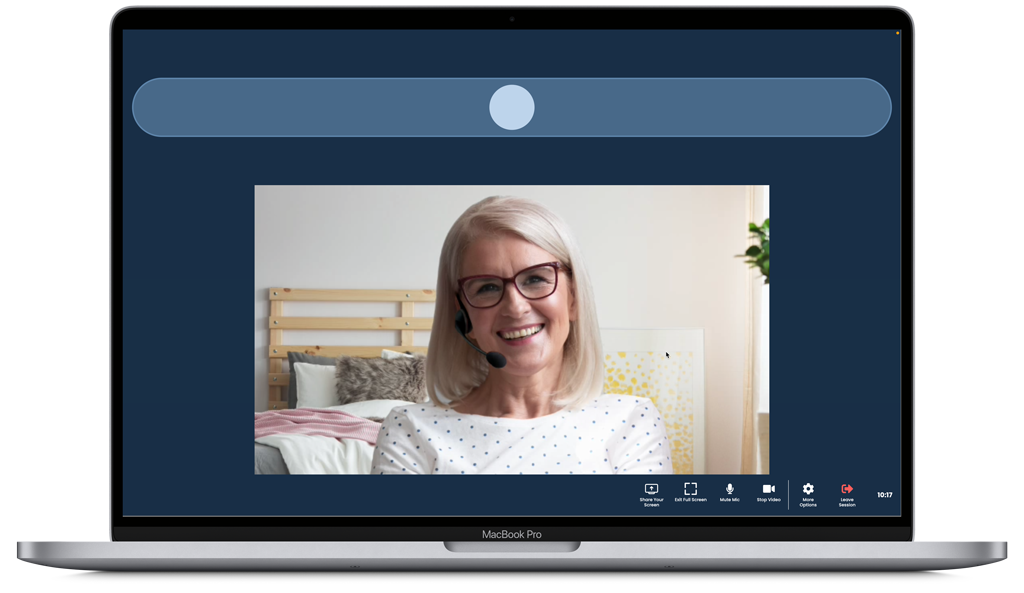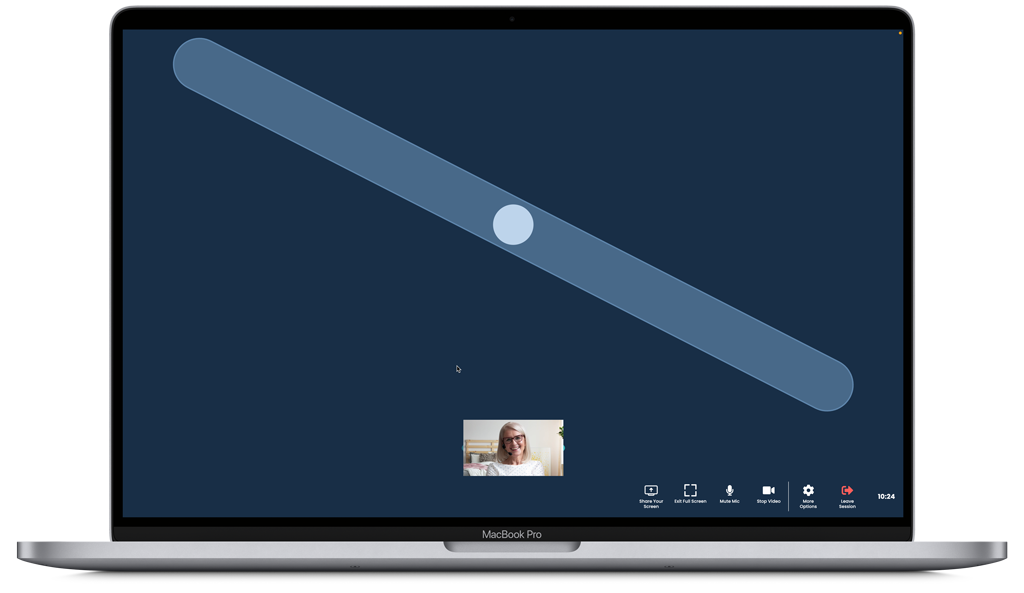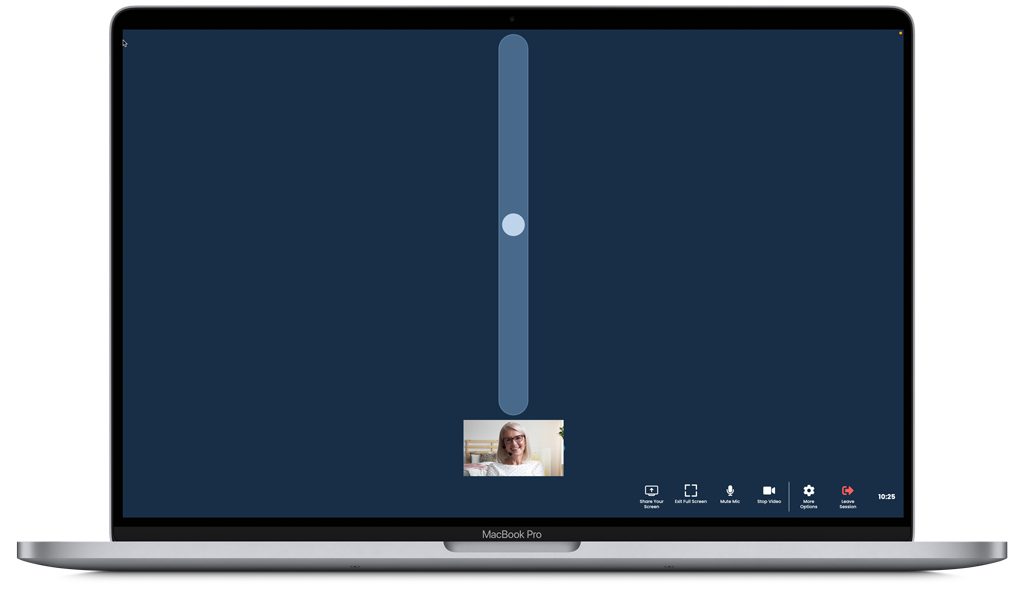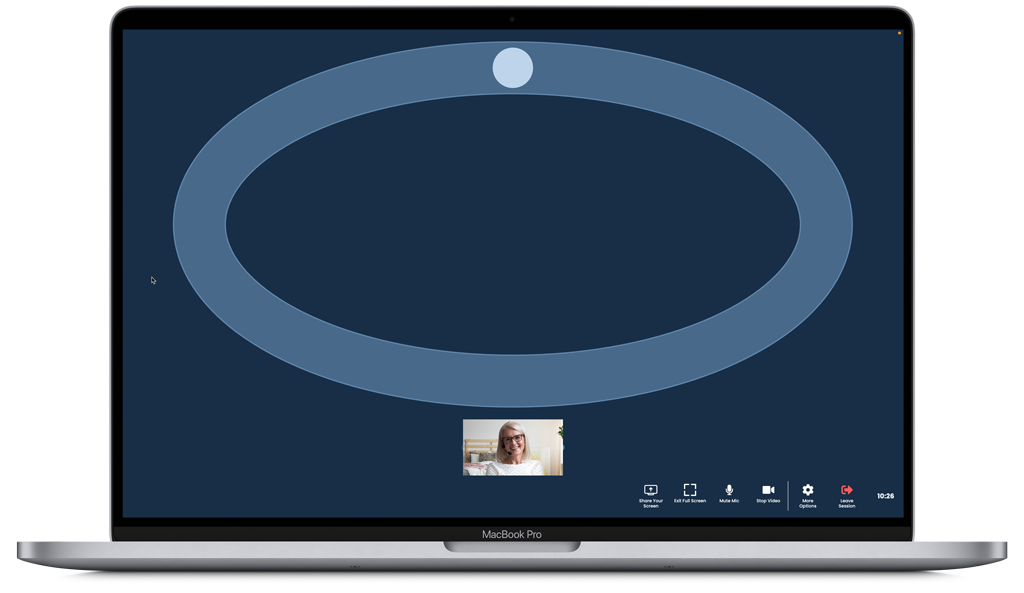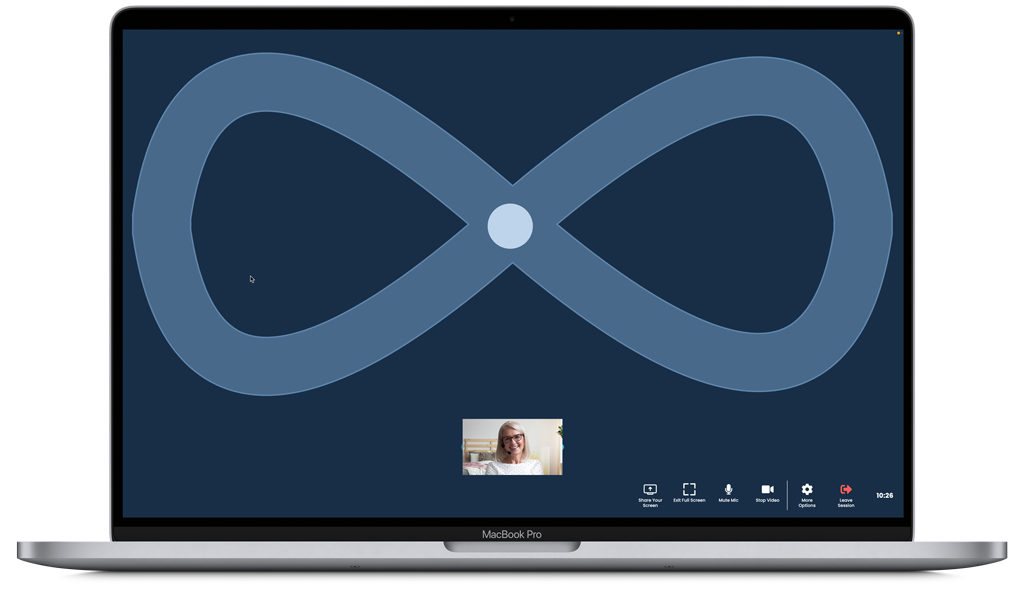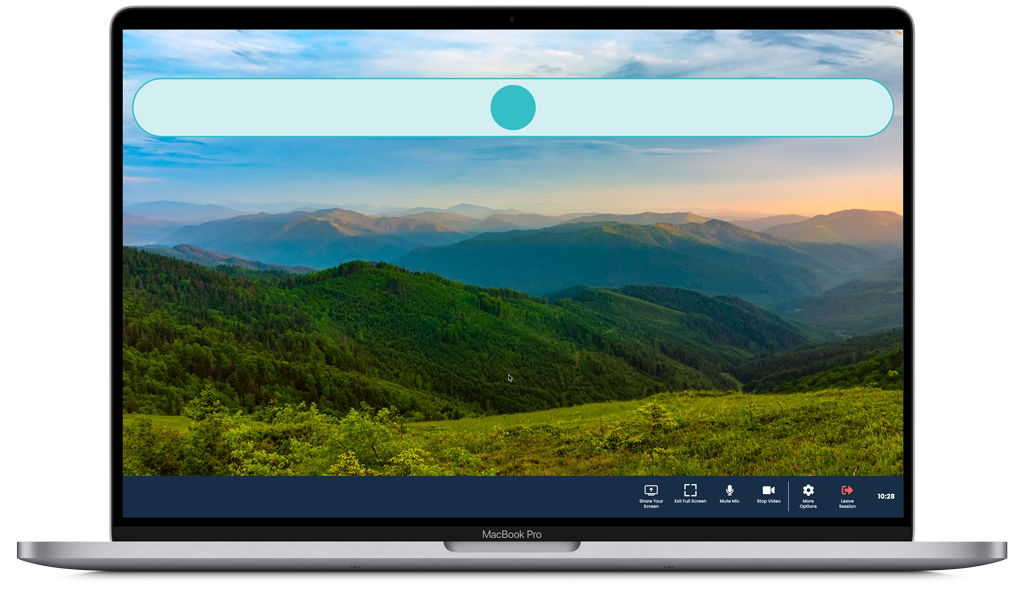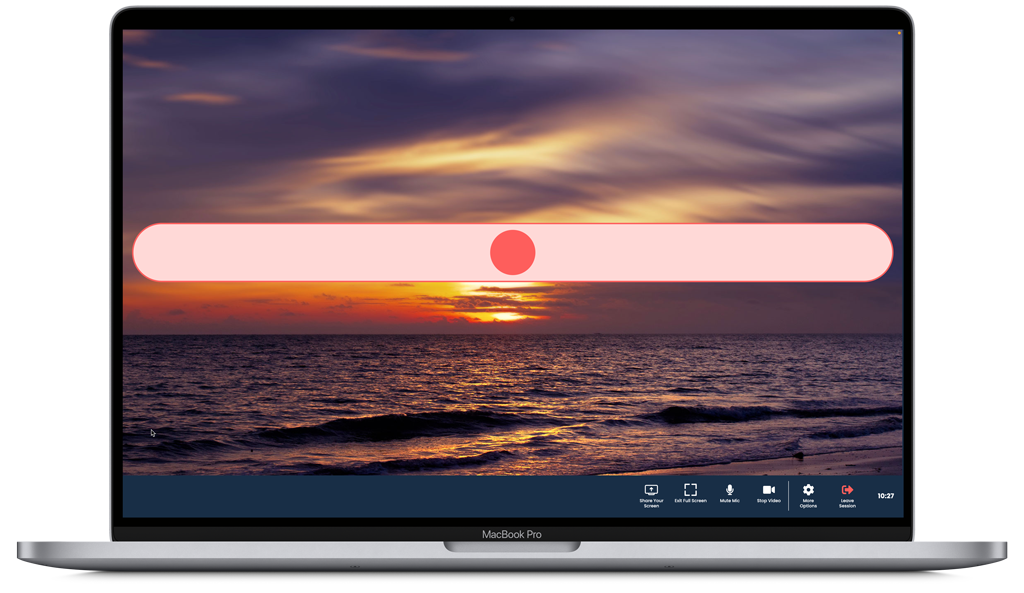EMDR Digital
Light Bar
Advanced tools, bright ideas!
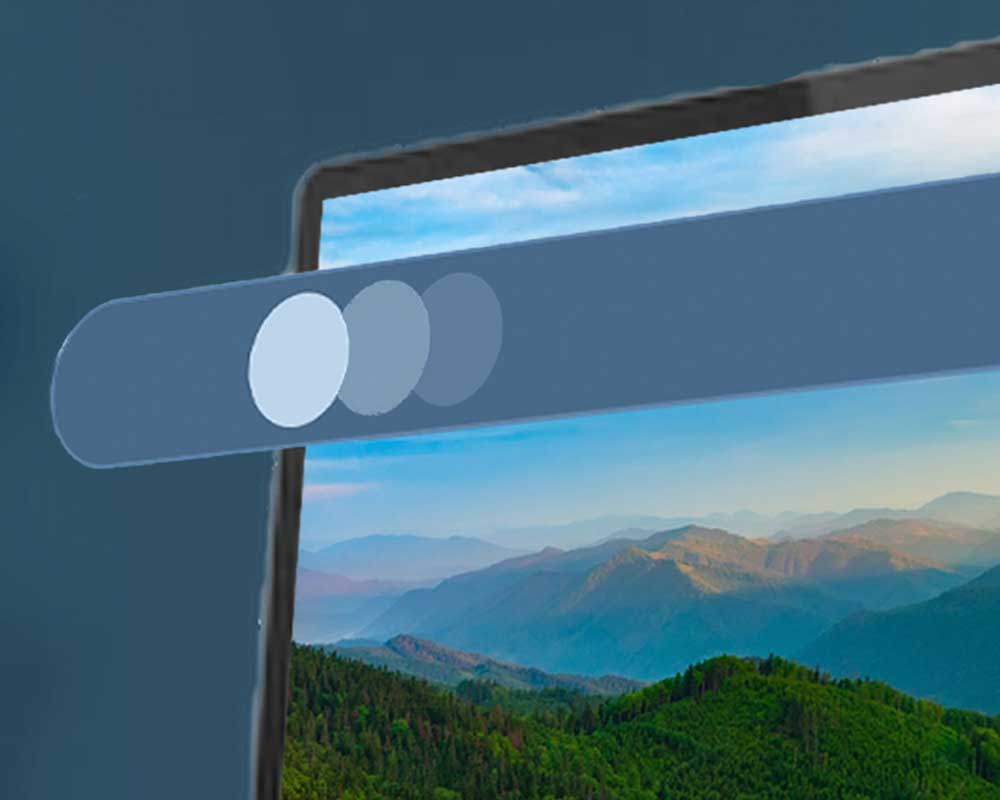
EMDR Digital
Light Bar
Advanced tools, bright ideas!
Light Bar augmented bilateral stimulation
for detailed control of cognitive workloads.
- Use online or in your therapy room
- Eliminates the physical strain of manual BLS
- More affordable than a desktop light bar
- Extensive customisation of cognitive workload
- Save BLS templates for use across multiple clients
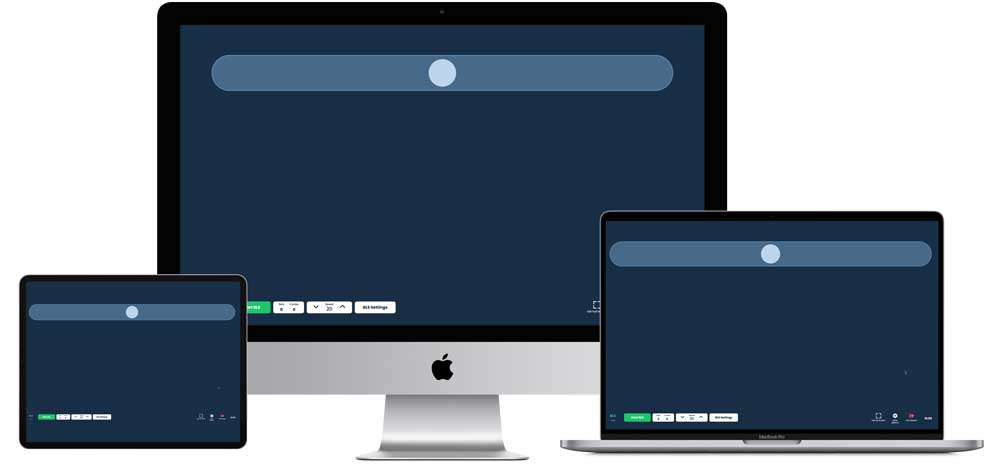
Online Sessions
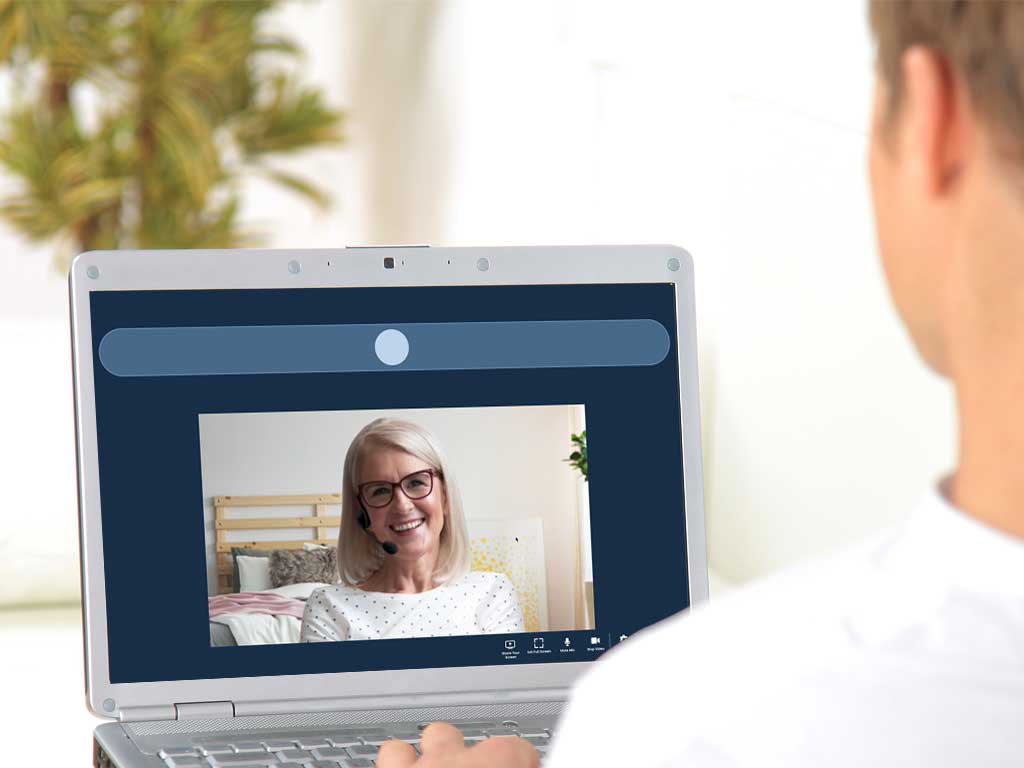
Our Digital Light Bar was first introduced for online sessions in 2020 when covid restrictions forced most EMDR therapy sessions online. Since then, it has become an essential tool for many therapists, allowing them to deliver the same quality of session to their clients online as they would in their therapy room.
The light bar and video conferencing are seamlessly integrated together on your client’s screen, with the therapist having full control of how visual BLS is presented to the client and whether visual reference of the therapist is maintained on-screen during BLS.
The light bar overcomes the limitations that can be experience by therapists attempting to us screen sharing or manual BLS in front of their webcam.
Therapy Room
Modern computers, laptops and tablets have high resolution screens, fast screen refresh rates and powerful processors. These attributes make them an ideal canvass for displaying a digitised light bar.
Previously the primary technical aid for visual BLS was a separate desktop light bar which, while effective and popular, can be expensive and offers far fewer options for adjusting visual BLS to suit a client during a session.
The Digital Light Bar can be remotely-controlled using your phone/tablet so there is no need to access the visual BLS device during a session and comfortable boundaries can be maintained.

One Light Bar, Many Possibilities
Client Experience
Facilitates Attention
The moving light bar can capture the client’s attention and help them stay focused on the therapeutic process. This can aid in maintaining concentration and engagement during EMDR sessions.
Reduces Self-Consciousness
Some individuals may find it easier and more comfortable to focus on the light bar rather than looking at their therapist’s finger or wand. The Digital Light Bar allows the therapist to be positioned well out of their client’s eyeline.
Structured & Consistent BLS
The Digital Light Bar provides a consistent and reliable means of delivering bilateral stimulation during EMDR therapy. It offers a structured approach to bilateral stimulation, allowing therapists to maintain a consistent rhythm and pace.
Perceived Effectiveness
The presence and use of a technology solution and the consistent and structured delivery it enables can enhance the client’s belief in the effectiveness of the therapy.
Enhanced Relaxation Response
The rhythmic back-and-forth movement of the light bar can have a calming effect on the nervous system. This can help induce a relaxation response in the client, promoting a sense of safety and reducing anxiety or distress during the therapy session.
Therapist Workflow
Reduced Physical Strain
Compared to other forms of bilateral stimulation, such as manually moving fingers, using a light bar requires minimal physical effort on the part of the therapist. This can help reduce potential strain or fatigue that may occur with prolonged manual movements, allowing therapists to focus more on the therapeutic process.
Improved Focus on the Client
With the light bar providing the bilateral stimulation, the therapist can focus more on observing and tracking the client’s responses, non-verbal cues, and eye movements during the EMDR therapy session. This can enhance the therapist’s ability to attune to the client’s experience and provide appropriate guidance and support throughout the process.
Easier To Deploy Sensory Integration
Bilateral stimulation through visual input can complement other sensory modalities used in EMDR therapy, such as auditory or tactile stimulation. This multisensory integration can enhance the overall effectiveness of the therapy by engaging multiple sensory channels simultaneously.
